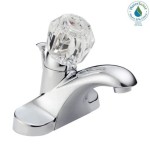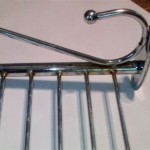How To Pick A Bathroom Lock At Home
Picking a lock is a skill that can be useful in a variety of situations, from unlocking a forgotten door to gaining access to a locked room. While it is important to note that picking a lock without consent is illegal in most jurisdictions, understanding the basic principles of lock picking can be a valuable skill for those who need to gain access to their own property or for security purposes.
This article will provide a basic overview of how to pick a bathroom lock at home, focusing on the process of using a tension wrench and a pick. It will not delve into the legal implications of picking locks or cover more advanced techniques that may be used for more complex locks.
Understanding Lock Anatomy
Before attempting to pick a lock, it is crucial to understand the basic anatomy of a lock and how it works. A common type of bathroom lock is a pin tumbler lock, which is characterized by pins that are arranged inside the lock cylinder. When the correct key is inserted, the pins are lifted to a specific height, allowing the cylinder to rotate and unlock the door. A lock picking set typically includes a tension wrench and a pick.
The tension wrench is used to apply pressure to the lock cylinder in the direction of rotation. This pressure helps to hold the pins in place as the pick is used to manipulate them. The pick is a thin tool with a series of hooks or teeth that are used to lift the pins one by one. By manipulating the pins, you can lift them to the correct height, allowing the cylinder to rotate and unlock the door.
The Steps to Picking a Bathroom Lock
Picking a lock requires patience, practice, and a steady hand. The following steps outline the general process:
1.
Identify the lock type:
Determine if the lock is a pin tumbler lock (the most common type) and identify the lock's direction of rotation (clockwise or counterclockwise). This can be done by checking the direction in which the key turns to unlock the door. Using the right tools for the right lock is crucial for success.2.
Insert the tension wrench:
Insert the tension wrench into the keyhole and apply gentle pressure in the direction of rotation. This pressure will help to keep the lock cylinder in place as you pick the pins.3.
Select the pick:
Choose a pick that is appropriate for the lock and insert it into the keyhole. You need to find the correct size pick for the specific lock. The pick's teeth are what you will use to manipulate the pins.4.
Feel for the pins:
Gently move the pick back and forth while keeping the tension wrench engaged. As you do this, you will feel the pins rising and falling. The goal is to feel for the "set" position of each pin. You can tell when a pin is set because it won't fall back down as easily. This indicates that the pin is in the correct position to allow the cylinder to turn.5.
Lift the pins:
When you feel a pin set, use the pick to lift it further. Once the pin is lifted enough, it will stay in place and you can move on to the next pin. Lift all the pins in the lock to allow the cylinder to rotate.6.
Rotate the cylinder:
Once all pins are set, the cylinder should rotate. The lock is unlocked. If the cylinder does not turn, check for any pins that may not be fully set. You need to find all the pins and lift them to their set position.Important Considerations
While this guide offers a general understanding of lock picking, there are several crucial considerations to keep in mind:
1.
Legality:
Picking a lock without consent is illegal in most jurisdictions, so ensure you have the legal right to do so before attempting to pick any lock.2.
Lock complexity:
The complexity of locks can range significantly. Pins can have different heights, and some locks may have specialized components. The process of picking a lock can become more challenging with more complex locks.3.
Practice:
Lock picking requires patience and practice. Start with a simple lock to develop your skills and work your way up to more challenging locks. Master the basics before attempting more complex locks.4.
Damage:
Improper techniques or excessive force can damage the lock. Treat the lock with care and avoid forcing the cylinder or pins.5.
Security:
It is important to remember that lock picking is a security risk. If you are concerned about the security of your lock, consider upgrading to a more secure lock or implementing other security measures such as an alarm system.Picking a lock is a skill that can be useful in certain situations. However, it is essential to be aware of the legal implications and the potential risks involved. It is also crucial to practice and develop the skill gradually, starting with simple locks and working your way up to more complex ones. Remember to use the proper tools and techniques and treat the lock with care to avoid damage.

How To Pick Locks Of Indoor Bedroom Bathroom With Paper Clips

How To Pick Locks Of Indoor Bedroom Bathroom With Paper Clips

It S Easy To Pick Some Smart Deadbolts We Aren T Alarmed Wirecutter

How To Open A Locked Bathroom Door 10 Steps With Pictures

How To Open Bathroom Lock With Paper Clip 3 Of 6 Mr Locksmith

How To Pick Locks Of Indoor Bedroom Bathroom With Paper Clips

Choosing The Right Bathroom Door Locks For Your Home

How To Unlock A Door With Hole Art Of Lock Picking

How To Pick A Door Lock With Household Items

How To Pick A Door Lock With Household Items
Related Posts







